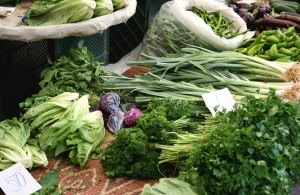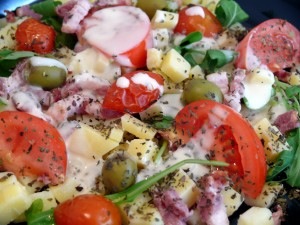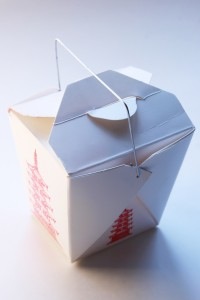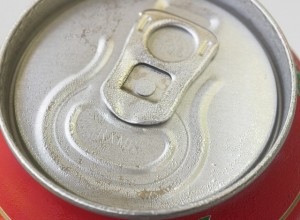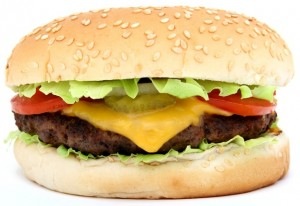If It Says Salad Does It Mean It’s Healthy?
Short answer: No. Maybe your salad is healthy and delicious, or maybe it’s just delicious and far from a healthy meal.
This is something I see all of the time: You are in line at a buffet or waiting to order your meal in a cafeteria. The person in front of you hems and haws over his or her choice – mumbling about trying to “be careful about calories.” He or she then goes on to say, “Oh, I guess I’ll have a salad,” like it’s the best choice of “diet food” even though it’s not really what the belly and mind seem to be craving.
In the pursuit of cutting calories, the salad might be a far worse choice than, for example, a turkey or ham sandwich with mustard and veggies, or grilled chicken with veggies.
There are some very nice choices of healthy salads and there are some pretty bad choices, too. In many cases you can do well or horribly in the same restaurant, depending on what you select to eat.
Here are some examples of fast/chain food salads — but remember that each is just one menu item. In each restaurant you have plenty of other options.
Calorically Good To Reasonable Choices:
- Panera Bread’s BBQ Chopped Chicken Salad, with mild BBQ sauce, no dressing (350 calories, 10g fat)
- Wendy’s Chicken Caesar Salad with Grilled Chicken Fillet, with home-style garlic croutons (490 calories, 32g fat)
- McDonald’s Premium Southwest Salad with Grilled Chicken, without Creamy Southwest dressing (320 calories)
- Burger King’s Tendergrill Chicken Garden Salad with Ken’s Ranch Dressing (490 calories, 30g fat)
Then there’s the: “how many calories, you’ve got to be kidding” salads.
- Outback Queensland Salad with Bleu Cheese Dressing (1075.8 calories, 81.6g fat)
- Cosi Signature Salad (130 calories, 45g fat)
- Ruby Tuesday’s Southwestern Beef Salad (1139 calories, 81g fat)
- Wendy’s Southwest Taco Salad (680 calories, 39g fat)
- Olive Garden’s Grilled Chicken Caesar Salad, without Caesar dressing (850 calories, 64g fat)
SocialDieter Tips:
If you are putting together your own salad at a salad bar – or making your own at home – here are some tips to keep your salad healthy and delicious.
- Dressings are not just decorative – they can be disastrous. If you have enough flavorful stuff in your salad, you may not even need dressing. If you do, the creamy stuff usually is more caloric (you can always dilute it with vinegar). Most vinegar has almost no calories so pour it on. There are many choices of light or calorie free dressings. Most places glop on dressing – you’d be surprised how little you need for taste. A dieter’s trick is to ask for dressing on the side and dip your fork into the dressing before you snare a mouthful of salad.
- Mayonnaise has around 90 calories a tablespoon. Think about how much goes into chicken or tuna salad. Use light mayo, mustard, or low fat yogurt instead.
- Go for reduced fat or fat free cheese instead of liberally sprinkling on the full fat stuff. ¼ cup of reduced fat (2%) shredded cheddar has 80 calories, 6g fat, 7g protein; fat free feta has 40 calories, 0g fat, 7g protein.
- If you are going out to order a salad order from a place that has low fat dressing choices and lean proteins (grilled chicken, tuna without mayo). You can always use only half a package of salad dressing instead of a whole one.
- Lay off the croutons and wontons. Sure, they’re crunchy, but you’re not getting anything nutritious from them. Get your crunch from carrots, cucumbers, or a very light sprinkling of sunflower seeds or nuts (caloric but healthy).
- Salads with dark green lettuce and colorful vegetables add more vitamins, minerals, and phytochemicals.
- Make your salad more of a meal by adding lean proteins: poultry (grilled), seafood, a hardboiled egg, or beans. Add whole grains like brown rice or quinoa, without dressing, to really beef it up. Leftover lean proteins and veggies can be chopped up and added to salad the next day. Keep a supply of canned tuna, anchovies, and beans for quick calorie sparing protein additions.
- Certain extras pile on calories. You could have fries and a bacon cheeseburger for the same calories as a salad loaded with creamy dressing, shredded or crumbled cheese, bacon, avocado, mayonnaise salads, meat, nuts, and croutons. Instead, heap on tomatoes, asparagus, carrots, cabbage, broccoli, scallions, onions, mushrooms, peppers, cucumbers, arugula, spinach, and herbs. Olives add about 4 calories apiece – but, add an enormous amount of flavor and may help you forego dressing.
- Check out the nutritional info before you order – and remember to add in the totals for dressing, croutons, and other “extras.” Some municipalities currently require calorie counts to be posted in fast/chain food restaurants. The new health care bill will require posting in fast/chain food restaurants with more than 20 outlets. Almost all chain restaurants list their nutritional stats online.
